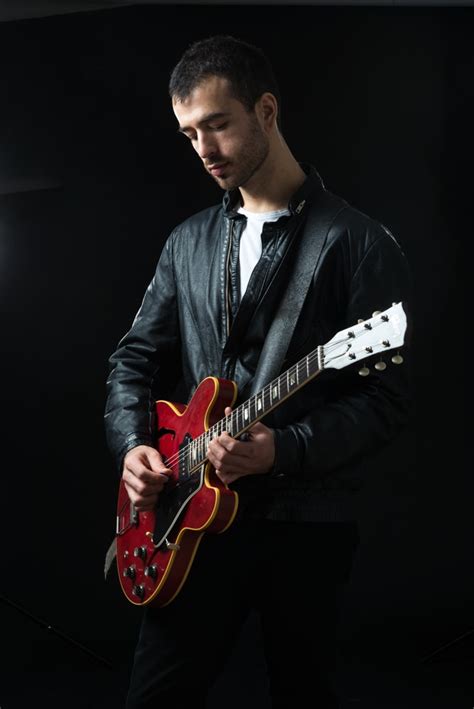Songwriting News: Experimenting with Odd Time Signatures in Your Songwriting (2024)
A time signature is a way of indicating how the basic beat of a song is organized. By far the most common time signature (also called ‘meter’) is 4/4, or common time. Most of the songs you’ve heard in practically any genre are in 4/4 time. “How to Harmonize a Melody.” It shows you, step-by-step, […]A time signature is a way of indicating how the basic beat of a song is organized. By far the most common time signature (also called ‘meter’) is 4/4, or common time. Most of the songs you’ve heard in practically any genre are in 4/4 time. “How to Harmonize a Melody.” It shows you, step-by-step, […]

A time signature is a way of indicating how the basic beat of a song is organized. By far the most common time signature (also called ‘meter’) is 4/4, or common time. Most of the songs you’ve heard in practically any genre are in 4/4 time.
“How to Harmonize a Melody.” It shows you, step-by-step, how to add chords to that melody you’ve created. The perfect text for songwriters trying to improve on their melody-first songwriting skills.
Usually a time signature organizes beats into a pattern of strong beats and weak beats. So in 4/4 time, there are four beats for every bar (or measure) of music, organized so that there is an alternating back and forth between strong beats and weak beats:
If you play almost any of your favourite songs, it’s likely that it will be in 4/4 time. Play Michael Jackson’s “Beat It“, and your foot will automatically start tapping the beat. Pay close attention to what you’re doing and you’ll notice that beats 1 and 3 feel strong, and beats 2 and four feel weaker.
It feels right to have the snare drum to hit on the weak part of a bar, and this is common in many songs from many genres.
Experimenting
How much do you experiment with time signatures in your songwriting? If you’re not writing in 4/4, the next most common choice would be 3/4, like the verse of the Beatles’ “Lucy in the Sky With Diamonds”. You might choose something like 7/4, which often sounds like a combining of 3/4 and 4/4, like Peter Gabriel’s “Solsbury Hill.”
I love Sting’s “I Hung My Head” from his 1996 album “Mercury Falling”, because the time signature takes a bit of time to figure out.
It’s in 9/8, but while a typical 9/8 bar would have three equal beats comprised of three eighth notes, he rearranges the beats so that a bar sounds like 4/4 time with the second beat stretched:
Once you get into these kinds of more complex time signatures, there are several ways to actually notate them. For example, you’d get the same result if you considered “I Hung My Head” as alternating 5/8 and 4/8 bars.
What I like about this choice of time signature (or any odd meter) is that it has an effect on the energy of the music. Songs with unequal beats, like this song, makes the music feel like it’s got more of an edge, and you can use that to your advantage as you craft a song and play around with its influence on your audience.
If you’ve come up with what feels like an odd time signature, but you can’t figure out what it is, use it anyway! What’s most important is that you’re able to do it, and coming up with it early in your songwriting process can have interesting and positive effects on your melodies, chords and lyrics. You can always figure out later on what the time signature is.
You can also play around with syncopations and make it sound like you’re changing time signature, when you’re actually just keeping everything in a typical 4/4 time. A good example of this is “One For the Vine”, by Genesis, written mainly by keyboardist Tony Banks. Listen to how Phil Collins’ drum beat pattern makes it sound like the time signature is changing, when in fact it’s just basic 4/4 after coming out of a short 5/8 section.
I’ll leave the final remark on this to a YouTube listener who was commenting on people’s frustration with the odd time signature choice in Sting’s “I Hung My Head”:
What I can’t get my head around is the derision Sting is getting for having the audacity to use a meter that makes some people’s heads explode. Obviously never listened to Pink Floyd, Nine Inch Nails, Peter Gabriel etc. People….. 4/4 is not the be all and end all in music . Sting is an intelligent artist who knows when to (and when not to) use the “extraordinary” to spice things up.
Written by Gary Ewer. Follow Gary on Twitter.
If you’re ready to take your songwriting to its highest level possible, you need “The Essential Secrets of Songwriting 10-eBook Bundle.” Get the manuals that thousands of songwriters are using. Comes with an all-important Study Guide and a free copy of “Use Your Words! Developing a Lyrics-First Songwriting Process.”

 Musician
Musician 







![Life & Dreams my Lyrics [Gealluss]](/img/?q=Life & Dreams my Lyrics [Gealluss]&w=360&h=215)
![Jumbo hr Lyrics [Bujo]](/img/?q=Jumbo hr Lyrics [Bujo]&w=360&h=215)
![Sam v izbe sk Lyrics [dancimnau9]](/img/?q=Sam v izbe sk Lyrics [dancimnau9]&w=360&h=215)
![Heiðr is Lyrics [Burzum]](/img/?q=Heiðr is Lyrics [Burzum]&w=360&h=215)